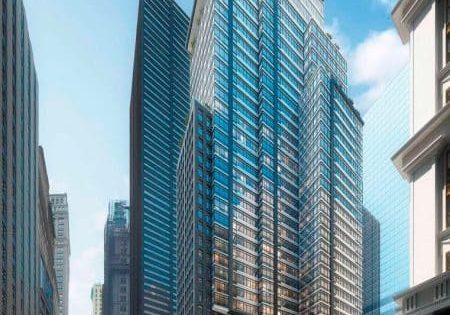NEII’s comments on the key changes to A17.1/B44
by Karen Penafiel
Developed by the American Society of Mechanical Engineers (ASME), ASME A17.1/CSA B44 sets standards that govern safety across the industry. The code is developed by ASME’s A17 Standards Committee, a diverse, international group of subject-matter experts including enforcing authorities, mechanical and electrical engineering and design experts, inspectors, consultants, labor authorities, building and facility owners, and installation and maintenance specialists.
A17.1 is updated every three years, and the 2019 edition offers multiple changes designed to ensure the requirements represent the latest safety enhancements, address new technology, and clarify or enhance existing requirements. The 2019 edition was issued on December 31, 2019, and will become effective six months after that date.
New Technologies
Each safety code update brings many revisions and additions to enhance safety and reflect innovations and technologies developed in the three years since the previous code was published. The 2019 code-development cycle was no exception; more than 100 proposals were approved, some of them modifying multiple requirements. While some code updates require more work to implement than others, all are intended to improve safety for vertical- transportation users and the experts who maintain the equipment. The most notable changes in the 2019 edition of the code that require brand-new technologies involve door protection and emergency communications for passengers who are deaf, hard of hearing or speech- impaired.
3D Door Protection
The 2019 code includes new requirements for 3D door protection on car-door reopening devices, specifying that they must detect a target approaching the door. Previously, the code only required the detection of someone once they were in the path of the door. The new requirements bring additional protection by detecting a person approaching the door. The means for detecting an approaching object must be effective until the leading edge of the doors are within 18 in. of the fully closed position. The door protection system must also be self-monitoring. After the door has reached its fully opened position and before its closing is initiated, the detection means must self-check to verify it is operational. If the self-check outcome is unsuccessful, power closing of the doors will be at reduced kinetic energy.
While some code updates require more work to implement than others, all are intended to improve safety for vertical- transportation users and the experts who maintain the equipment.
Two-Way Emergency Communication System
The code requires elevators to be equipped with an interactive two-way emergency communication system that allows the deaf, hard of hearing and speech-impaired to interact with emergency personnel through conference, chat/text or other technologies that have a video format with both text- and voice-activated options.
The required two-way communication system introduces new technologies to elevators installed under the 2019 code, and the National Elevator Industry, Inc. (NEII) recognizes there may be challenges with the implementation of this requirement.
Requirements for enhanced two-way communication systems for the deaf, hard of hearing and speech-impaired were originally included in the 2018 edition of the International Building Code (IBC). Aligning the two-way communication requirements in the ASME safety code is a significant part of harmonizing with the IBC that greatly impacts the elevator industry. Code harmonization is important, because conflicts between the codes can result in delays and added costs for building owners.
As always, NEII advocates that all jurisdictions strongly consider updating to the latest safety code.
Other notable changes to the 2019 edition include:
- Updated hoistway and car-door locking device requirements utilizing the term “closed detection means” and making it clear that these devices are electrical protective devices and may have traditional contacts or safety integrity level-rated devices.
- Requirements for unique software identifiers pertaining to executable software; the unique software identifier provides consistency in the delivery, discovery and usage actions of the software. The new requirements include documentation (similar to field wiring diagrams), allowance for field-adjustable parameters and onsite testing and verification guidelines.
- Clarification and enhancement of requirements for Firefighters’ Emergency Operation and use of elevators in emergencies, which were updated to include Fire Service Access Elevators as defined by the IBC and the National Building Code of Canada (NBCC). The requirements for Occupant Evacuation Operation were also updated for clarity and to provide more detail on interaction with other operation modes.
- Private residence elevator requirements for machine rooms, machinery spaces, control rooms and control spaces to address clearances and other means needed when machines and controllers are located in spaces in the hoistway
- Requirements for escalator dynamic braking that would not have been possible with the previous requirements; advances in electric motor control technology provide improvement to the braking/stopping performance of escalators using variable-frequency control of the motor to optimize the stopping process, regardless of load.
As always, NEII advocates that all jurisdictions strongly consider updating to the latest safety code, A17.1-2019/ B44-19, along with the referenced standards, to ensure the greatest level of safety for the public and elevator personnel. Each cycle of the safety code development process is incredibly important. Through the code, the industry is able to better ensure the billions of people riding and working on elevators, escalators and moving walks every day can do so safely and efficiently.
Get more of Elevator World. Sign up for our free e-newsletter.









